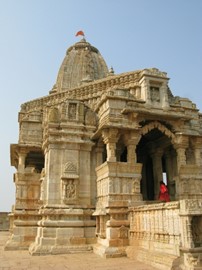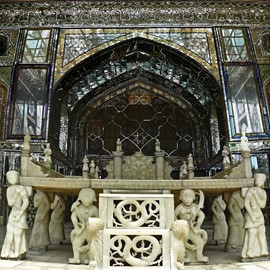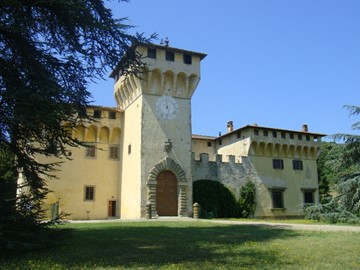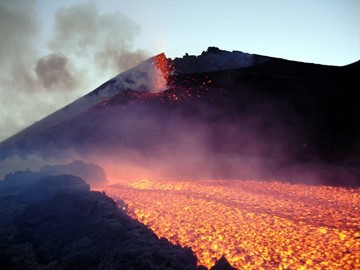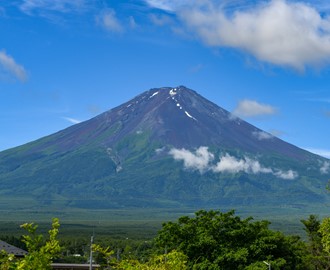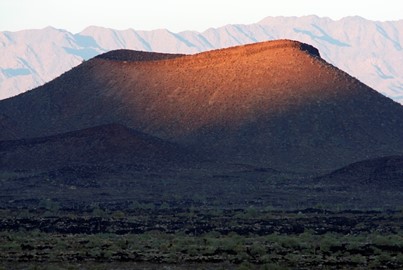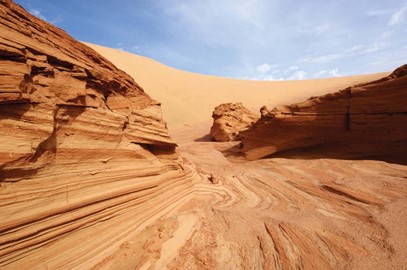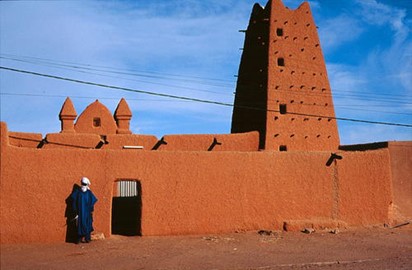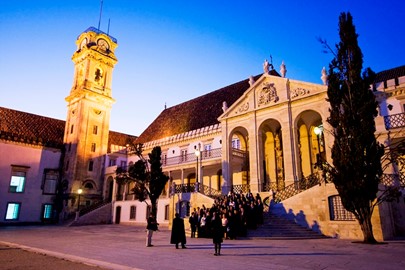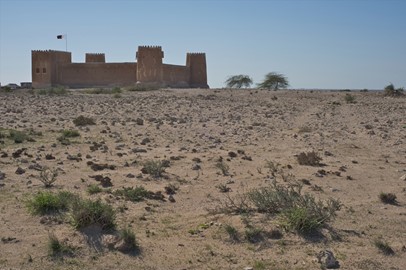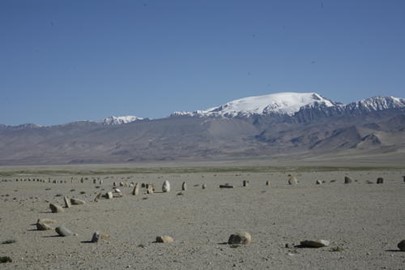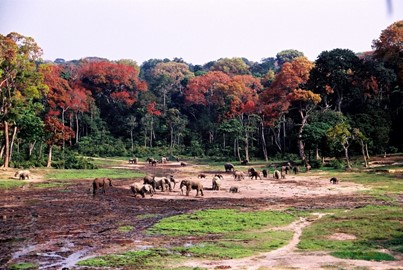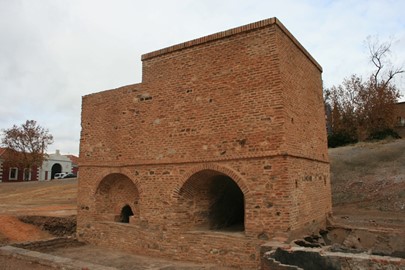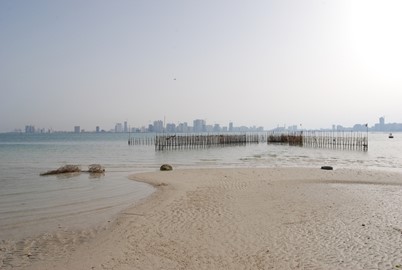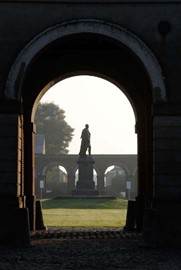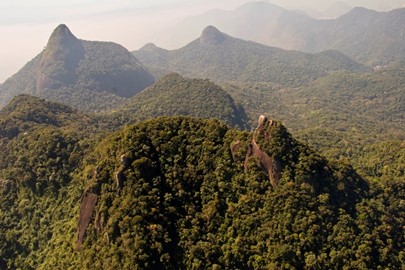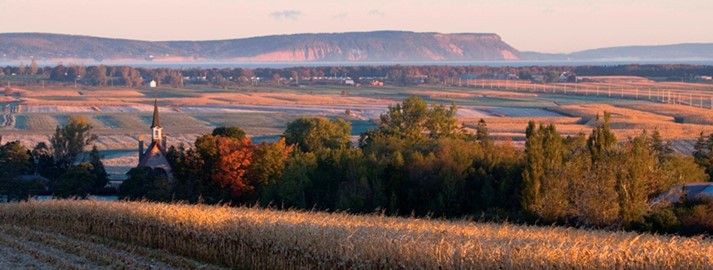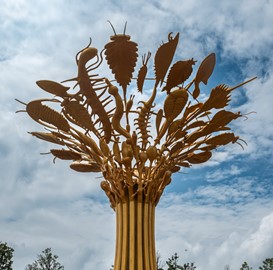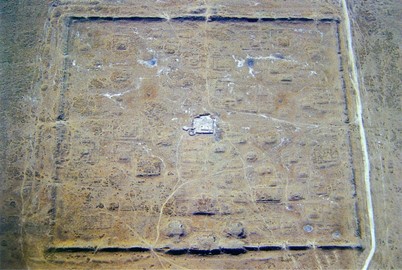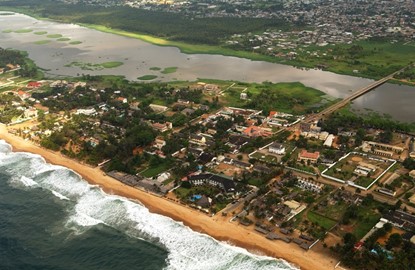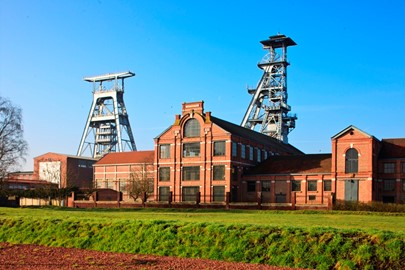search
Hill Forts of Rajasthan
The Hill Forts of Rajasthan, a UNESCO World Heritage site in India, comprise six majestic forts built between the 5th and 18th centuries by Rajput rulers. These forts, showcasing exceptional architecture and strategic design, served as centers of power, defense, and culture. Their robust walls, intricate palaces, and temples reflect a blend of Rajput and Mughal influences, offering a glimpse into India’s rich historical legacy. Today, they stand as enduring symbols of the region’s royal heritage and enginee... Read More
Golestan Palace
Golestan Palace, a UNESCO World Heritage site in Iran, is a stunning royal complex showcasing Persian architectural brilliance and opulence. This historic site features ornate tilework, mirrored halls, and elegant gardens, reflecting the grandeur of the Qajar dynasty. Recognized for its cultural value, it blends traditional design with European influences, offering a glimpse into Iran’s royal heritage.
Medici Villas and Gardens
The Medici Villas and Gardens in Tuscany, a UNESCO World Heritage site in Italy, represent an exceptional collection of Renaissance-era residences and landscaped gardens built by the influential Medici family. These sites blend elegant architecture with meticulously designed outdoor spaces, featuring fountains, sculptures, and terraced layouts that influenced European garden design. Recognized for their historical and artistic value, they illustrate the Medici’s patronage of art and innovation during the 15... Read More
Mount Etna
Mount Etna, a UNESCO World Heritage site in Italy, is one of the world’s most active volcanoes, renowned for its exceptional geological and scientific value. This towering stratovolcano features diverse volcanic landscapes, including craters, lava flows, and ash fields, shaped by frequent eruptions over millennia. Its unique ecosystem supports rare flora and fauna adapted to the harsh volcanic environment. Etna’s ongoing activity and striking natural beauty make it a globally significant natural landmark.
Fujisan
Fujisan, a UNESCO World Heritage site in Japan, is an iconic volcanic peak revered for its symmetrical beauty and cultural significance. This sacred mountain has inspired art, poetry, and pilgrimage for centuries, with historic shrines and trails dotting its slopes. Its snow-capped summit and surrounding landscapes exemplify a harmonious blend of natural splendor and spiritual tradition.
El Pinacate and Gran Desierto
El Pinacate and Gran Desierto, a UNESCO World Heritage site in Mexico, is a striking volcanic landscape featuring dramatic craters, lava flows, and vast sand dunes. This unique ecosystem supports a diverse array of desert wildlife and rare plant species, adapted to its arid conditions. Recognized for its geological significance and biodiversity, it stands as a testament to the natural beauty and ecological resilience of Mexico’s desert regions.
Namib Sand Sea
The Namib Sand Sea, a UNESCO World Heritage site in Namibia, is a stunning coastal desert renowned for its vast expanse of towering sand dunes, some reaching heights of over 300 meters. This unique landscape, shaped by wind and time, features striking red and orange hues, creating a dramatic contrast with the Atlantic Ocean. Recognized for its exceptional natural beauty and ecological significance, it supports a surprising variety of adapted wildlife, including rare species like the fog-basking beetle. Its ... Read More
Agadez
The Historic Centre of Agadez, a UNESCO World Heritage site in Niger, is a well-preserved example of a traditional Sahelian urban settlement. Founded in the 11th century, it flourished as a key trans-Saharan trade hub, blending indigenous and Islamic architectural influences. Its notable features include the iconic 27-meter-high mud-brick minaret of the Agadez Mosque, a testament to local craftsmanship, alongside a labyrinth of narrow streets and earthen homes. Today, it stands as a cultural treasure, refle... Read More
University of Coimbra
The University of Coimbra – Alta and Sofia, a UNESCO World Heritage site in Portugal, is renowned for its historical and cultural significance. Founded in 1290, the university is one of the oldest in continuous operation worldwide, featuring stunning architecture like the Joanina Library and St. Michael’s Chapel. Its traditions, including academic rituals and student life, reflect centuries of intellectual heritage, making it a remarkable testament to European education and history.
Al Zubarah
Al Zubarah, a UNESCO World Heritage site in Qatar, is a well-preserved 18th-century coastal town that offers a glimpse into the region's pearling and trading past. Founded by merchants from Kuwait, it flourished as a key trading hub in the Gulf, connecting local communities with global markets through its strategic location. The site features a fortified settlement with remnants of houses, mosques, and a marketplace, alongside a nearby fort built in 1938 for defense. Archaeological discoveries, including po... Read More
Tajik National Park
Tajik National Park, a UNESCO World Heritage site in Tajikistan, is renowned for its stunning natural beauty and rich biodiversity. The park features dramatic mountain landscapes, including some of the highest peaks in Central Asia, alongside pristine lakes, rivers, and glaciers. It serves as a critical habitat for rare species like the snow leopard and Marco Polo sheep, making it a vital conservation area. This protected region also holds cultural significance, with ancient archaeological sites and traditi... Read More
Tauric Chersonese
Tauric Chersonese, a UNESCO World Heritage Site in Ukraine, is an ancient city founded by Dorian Greek colonists in the 5th century BC on the northern shores of the Black Sea. This archaeological treasure encompasses the remains of a thriving polis, including public buildings, residential areas, and early Christian monuments, alongside its chora—well-preserved agricultural plots that once supported vineyards vital to the city’s economy. Inscribed on the UNESCO list in 2013, it showcases a remarkable blend o... Read More
Sangha Trinational
Sangha Trinational, a UNESCO World Heritage site in Cameroon, Central African Republic, and Congo, recognized in 2012, is a pristine rainforest spanning three countries in the Congo Basin, celebrated for its rich biodiversity. Home to gorillas, elephants, and rare forest species, its untouched woodlands, clearings, and rivers reflect a vital ecological hotspot. This transnational site showcases Central Africa’s natural heritage, preserved through cooperative conservation across borders in a remote wildernes... Read More
Heritage of Mercury
Heritage of Mercury, a UNESCO World Heritage site in Slovenia and Spain, recognized in 2012, encompasses the historic mercury mines of Idrija and Almadén, the world’s largest, operational from antiquity to recent times. Featuring mines, smelting plants, and towns, it reflects centuries of mercury extraction that fueled intercontinental trade, notably aiding silver mining in the Americas. This transnational site showcases a unique socio-technical legacy, blending industrial innovation with cultural heritage ... Read More
Pearling
Pearling, a UNESCO World Heritage site in Bahrain, is a historic testament to the region’s centuries-old pearl-diving tradition and economic heritage. Centered around preserved oyster beds, merchant houses, and a fortress, it showcases the architecture and lifestyle tied to the once-thriving pearl industry. Traditional wooden dhows and coastal sites reflect the skill and resilience of divers who shaped Bahrain’s identity. This cultural landscape highlights the intersection of nature, trade, and human endeav... Read More
Mining Sites of Wallonia
The Major Mining Sites of Wallonia, a UNESCO World Heritage site in Belgium, are four historic coal mines that highlight the region’s industrial heritage from the 19th and early 20th centuries. These well-preserved sites, featuring pitheads, machinery, and workers’ housing, illustrate the technological and social impact of coal mining during the Industrial Revolution. Inscribed by UNESCO in 2012, they reflect Belgium’s role in Europe’s industrial development. Today, they stand as monuments to the country’s ... Read More
Rio de Janeiro
Rio de Janeiro: Carioca Landscapes between the Mountain and the Sea, a UNESCO World Heritage site in Brazil, is renowned for its breathtaking natural beauty and cultural harmony. This site features dramatic mountains, lush forests, and iconic beaches seamlessly integrated with the city’s urban fabric, including landmarks like Sugarloaf Mountain and Copacabana Beach. Celebrated as the first urban landscape honored by UNESCO for its natural setting, it reflects the unique interplay between human development a... Read More
Grand Pré
Grand Pré, a UNESCO World Heritage site in Canada, is a historic landscape tied to the 17th- and 18th-century Acadian settlers. Known for its reclaimed marshlands and dyked farmlands, it reflects Acadian ingenuity and resilience, while also marking the site of their 1755 expulsion. Recognized for its cultural and historical significance, it stands as a poignant symbol of Acadian heritage.
Lakes of Ounianga
The Lakes of Ounianga, a UNESCO World Heritage site in Chad, are a stunning cluster of 18 desert lakes sustained by ancient groundwater in the hyper-arid Sahara. Ranging from freshwater to hypersaline, their vivid colors and unique ecosystems defy the surrounding arid landscape, supporting diverse aquatic life and rare species. Recognized for their geological and natural significance, they stand as a remarkable testament to environmental resilience.
Chengjiang Fossil Site
The Chengjiang Fossil Site, a UNESCO World Heritage site in China, is a remarkable paleontological treasure preserving fossils from 520 million years ago. Known for its exquisitely detailed soft-bodied organisms, it offers critical insights into the Cambrian Explosion, a pivotal evolutionary event. This ancient snapshot of early marine life captivates scientists and highlights Earth’s biological history.
Site of Xanadu
The Site of Xanadu, a UNESCO World Heritage site in China, preserves the ruins of Kublai Khan’s legendary capital from the 13th and 14th centuries. Blending Mongol and Chinese influences, its remnants include palace foundations, temples, and city walls across a vast steppe landscape. This historic site offers a glimpse into the grandeur of the Yuan dynasty and its cultural crossroads.
Grand Bassam
Grand-Bassam, a UNESCO World Heritage site in Côte d'Ivoire, is a former colonial town renowned for its blend of French and African architectural styles. Featuring elegant buildings, historic trade centers, and cultural landmarks, it reflects the region's historical significance as a hub for commerce and cultural exchange during the colonial era.
Nord Pas de Calais Mining Basin
The Nord-Pas de Calais Mining Basin, a UNESCO World Heritage site in France, is a historic industrial landscape shaped by over three centuries of coal mining. It features pitheads, slag heaps, and workers’ villages, reflecting the region’s economic and social history. The site preserves the legacy of the Industrial Revolution and its impact on communities. Its distinctive terrain blends human ingenuity with stark natural forms. This area offers a poignant look at France’s industrial past and its evolution.
Margravial Opera House
The Margravial Opera House, a UNESCO World Heritage site in Germany, is an exquisite example of Baroque architecture, completed in 1748 under the commission of Margravine Wilhelmine. Renowned for its well-preserved wooden interior and elaborate stage machinery, it showcases the opulence of 18th-century court culture. The theater’s intricate design and acoustics make it a standout historical venue, originally built for opera and theatrical performances. Today, it serves as a cultural landmark, attracting vis... Read More
Western Ghats
The Western Ghats, a UNESCO World Heritage site in India, is a biodiversity hotspot renowned for its rich flora and fauna. This mountain range hosts numerous endemic species, ancient forests, and unique ecosystems, making it a critical conservation area. Its cultural and ecological significance attracts researchers and nature enthusiasts alike.
